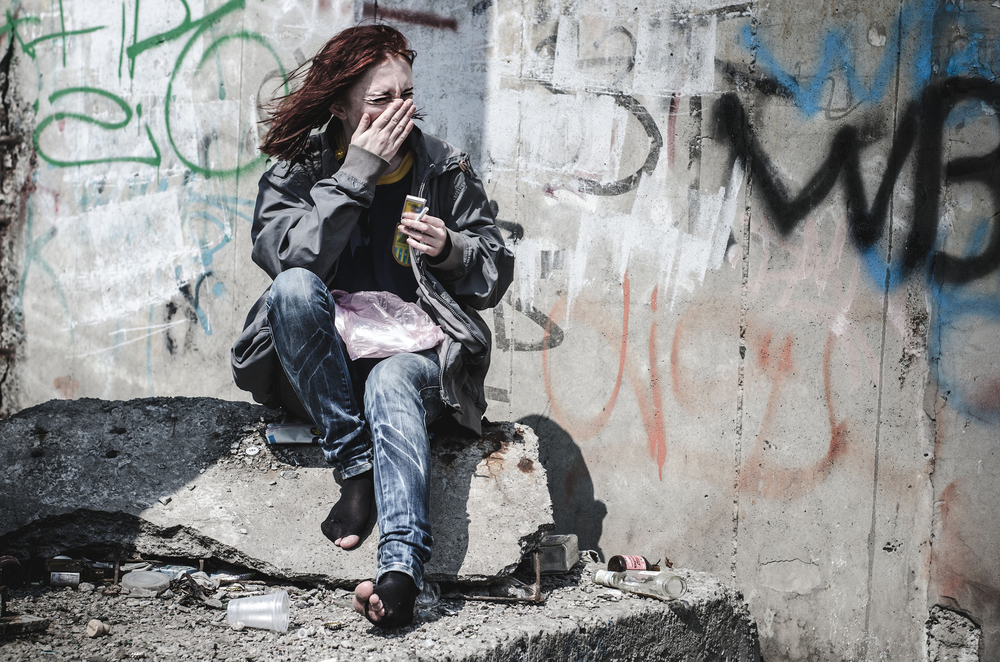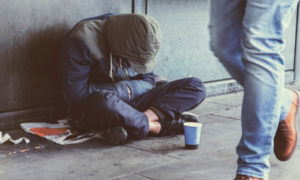
Olga Osadchaya/Shutterstock
.
As the number of homeless youths continues to grow in many large cities and small towns across the U.S., how should communities decide which young people get a shot at limited housing resources?
In a first-of-its-kind analysis of records for 11,000 homeless youths, a new report by Chapin Hall at the University of Chicago finds that a widely used questionnaire to assess young people’s risk of long-term homelessness accurately predicts who is unlikely to escape homelessness without help. That makes such risk assessments a powerful tool to help communities wisely allocate scarce housing resources, says Matt Morton, a policy fellow at Chapin Hall and the lead author of the report, “Toward a Systems Response to Ending Youth Homelessness.”

Matt Morton
“It’s awful that communities have to make prioritization decisions in the first place, that they don’t have enough housing and services for everybody,” said Morton, who leads Chapin Hall’s homelessness research. “But given that reality, it’s important to make sure those decisions … are really based on good information about who needs those resources most urgently.”
Until this study, communities couldn’t be sure they had good information. In recent years, many have adopted a risk assessment tool called the Next Step Tool for homeless youth, which assigns young people a risk score based on factors such as having experienced violence, a history of substance abuse or mental health challenges, and exchanging sex for a place to stay.
For the first time, this study links those risk scores with information about what housing services young people received and whether they stayed out of formal homelessness systems for at least a year. The report, co-authored with the University of Southern California and Youth Collaboratory, uses records from 16 urban, suburban and rural communities across 10 states, including California, Louisiana, Michigan, North Carolina and West Virginia.
“This report is incredibly groundbreaking,” said Megan Gibbard Kline, director of A Way Home America, which helped convene groups contributing to the report. “We thought this housing assessment was kind of a guess. Now we can say with some confidence this will give us a group of young people who are not going to do well if we don’t do anything.”
The higher a young person’s risk scores, the report finds, the lower their chances of leaving homelessness without a housing intervention. Among those with the highest scores (8 or more on a 17-point scale), more than half who temporarily resolved their own housing situations or went to live with family ended up homeless again. In contrast, 95 percent of youths with the lowest risk scores (3 or lower) stayed out of homelessness systems for at least a year. The study likely undercounts the number of youths who became homeless again, because some aren’t re-entered into homelessness tracking systems or exit and re-enter in different communities that don’t share their data.
Greater urgency needed
Only about one in three youths ever get placed into either permanent supportive housing or rapid rehousing programs, the study found, and they face daunting waits — an average of about 4½ months. “That’s a long time when you are in crisis,” Morton said. And “these waits have consequences.”
The longer they wait for housing, Morton and his colleagues found, the more likely they are to eventually return to homelessness, even after being housed for a period. Each extra day of waiting was associated with a 2 percent increase in a youth’s chance of re-entering the homelessness system.
“That should inspire urgency among policymakers and funders to help communities increase their resources, so that young people aren’t having to wait months to get into a housing program,” Morton said. It should also inspire creative solutions to house youth while they wait, he added, such as host home programs that place young people with community members who have a spare bedroom. “So while they are waiting for longer-term housing options, they’ve got stability and safety and support.”
Many young people with lower risk scores also fall through the cracks. About one-third lose touch with the system or remain homeless, the report found. Rather than longer-term housing, those youths might need temporary housing to allow time for family reconciliation, help rebuilding those relationships or assistance with jobs and school. “Otherwise those low-risk youth are going to come back as high-risk youth,” Morton said.
Youth of color, who are vastly over-represented among homeless young people, also face additional barriers to achieving stability, the report shows. Black and Hispanic youths are less likely than their white peers to exit homelessness by returning to family, and they are less likely to have those situations succeed. This suggests that addressing such disparities may require providing additional resources for youth of color who return to their families, Morton said.
If communities aspire to end youth homelessness, they can’t rely just on poorly resourced crisis response systems, both Morton and Gibbard Kline said. “The data show that many of those youth — in fact most of them — aren’t going to be adequately supported,” Morton said. Instead, communities must embrace a coordinated response across public systems, including juvenile justice, child welfare and schools.
“This new evidence,” Morton said, “really points to a compelling case for more prevention and early intervention efforts to curb the inflow of youth into homelessness systems.” A paper based on this research is also in the journal Cityscape.
This article has been updated.































